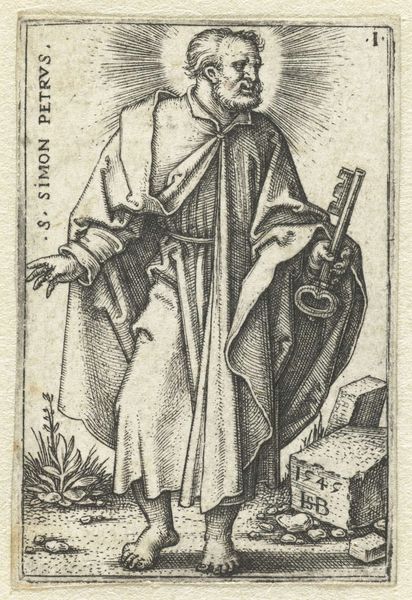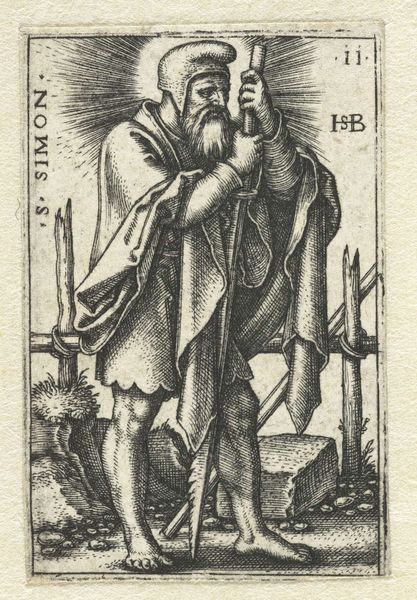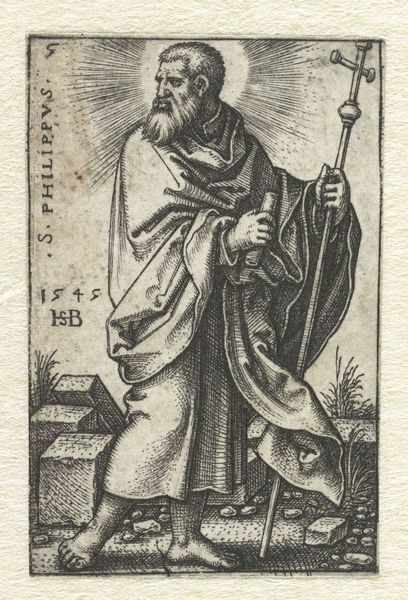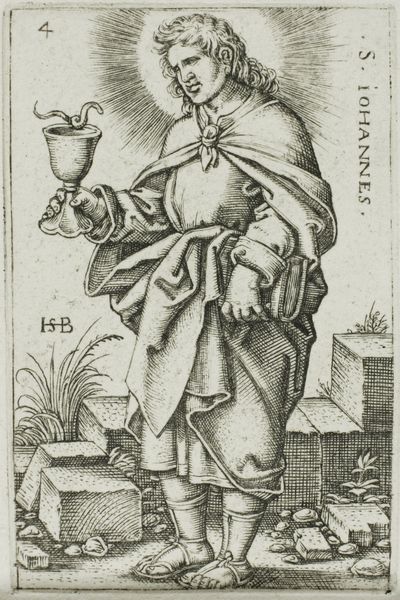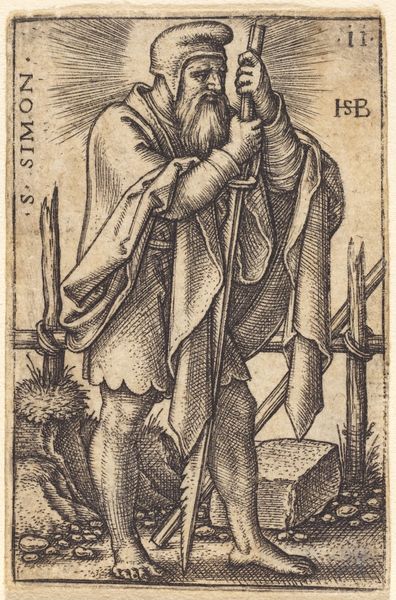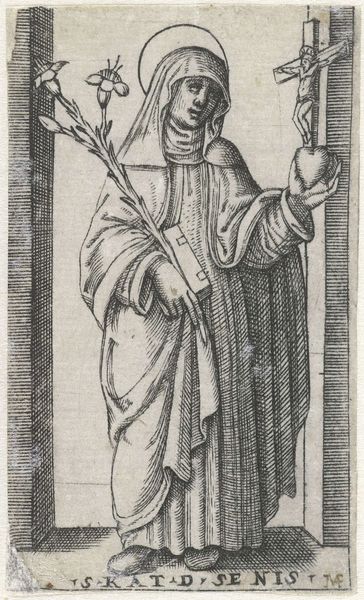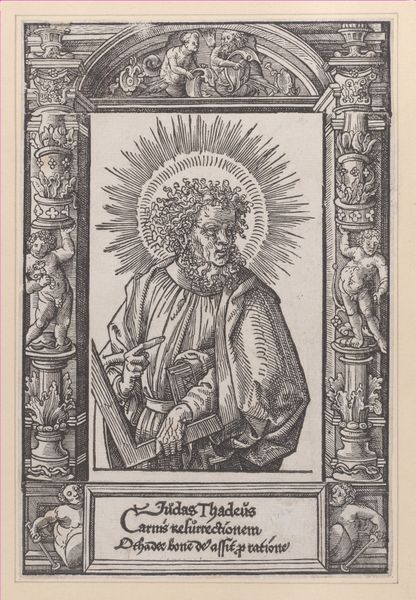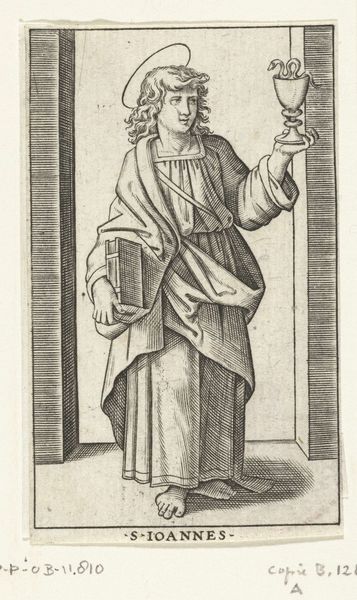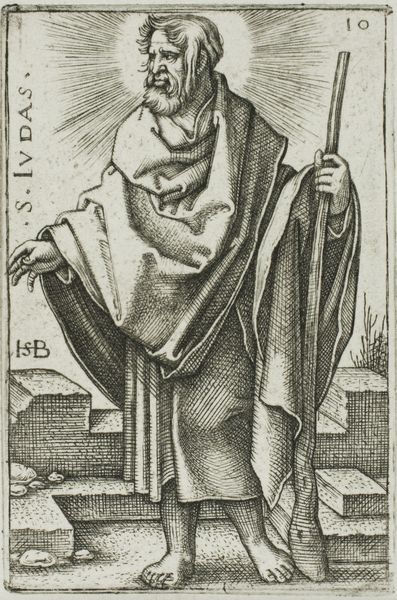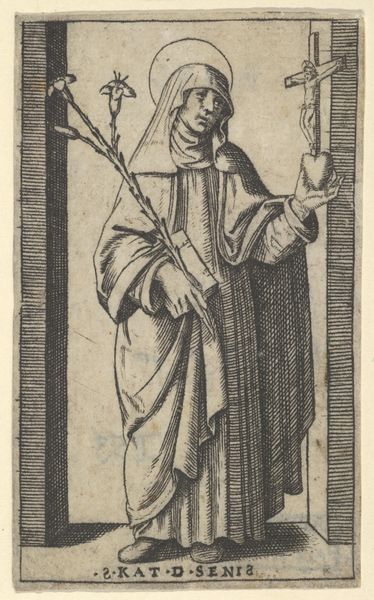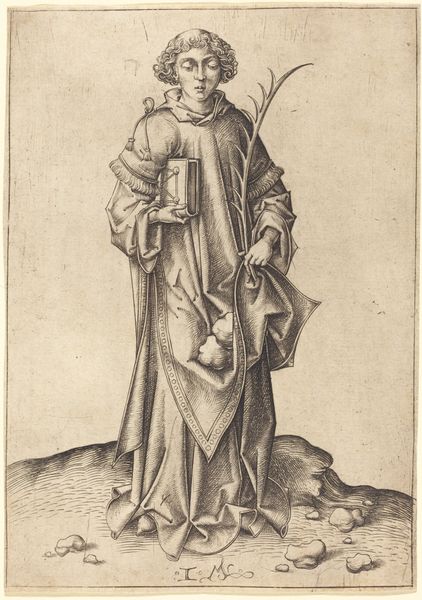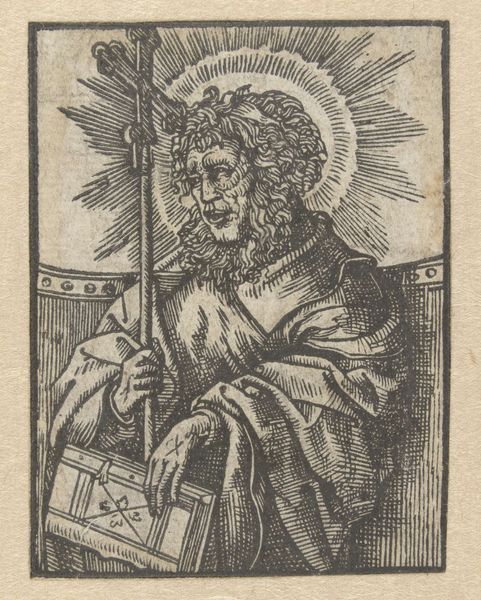
Dimensions: height 46 mm, width 30 mm
Copyright: Rijks Museum: Open Domain
Curator: Here we have "Johannes de Evangelist," an engraving completed in 1545 or 1546 by the German artist Sebald Beham. Editor: My goodness, that’s... striking. Stark, almost. The halo is radiant, but the figure, especially the garment and setting, seem grounded, rendered in meticulous detail. Curator: Indeed. Beham, associated with the Little Masters of Nuremberg, specialized in these small but incredibly detailed prints. The process of engraving—using a burin to carve into a metal plate—allowed for such precise lines. Editor: Thinking about those precise lines, I imagine Beham spending hours bent over this tiny plate, feeling the resistance of the metal with each incision. What stories did these artisans tell each other while hunched over their workbenches? And look at the symbol – a serpent rising from a chalice, it must symbolize overcoming darkness. Curator: You’re touching upon several intriguing elements. The cup with the snake, represents the legend of St. John surviving poisoning, so in this portrayal Beham's highlighting divine protection and the triumph of good over evil, I imagine. Also, it connects this image with a moment of faith being challenged by a test of physical vulnerability. Editor: These "Little Masters"—what was "little" about them besides the scale of their prints? The vision here certainly feels grand in its intention. Is it a challenge to high art somehow? What purpose was such intricate printmaking serving in 16th-century Nuremberg? Was it about labor? About craft? About material access to holy meaning? Curator: It's all those things, really. Small format prints made art more accessible. Mass production meant images like this could circulate widely, influencing artistic style and religious understanding across geographic areas. Beham also ran into legal problems more than once for his religious views... it is suggested some of his works even had to be printed elsewhere to avoid religious prosecution. Editor: So this piece isn't just a beautiful engraving; it's a small-scale rebellion. Knowing that makes me look at St. John differently. A symbol of resilience in multiple ways. Curator: Precisely. These engravings demonstrate how innovation in material production intersects with art, religion, and even political subversion. A fascinating conversation starter in every direction! Editor: Absolutely! Thank you, I am more interested than before. This artwork holds a profound echo, hinting at far larger stories, and maybe that’s why it is important even today.
Comments
No comments
Be the first to comment and join the conversation on the ultimate creative platform.

